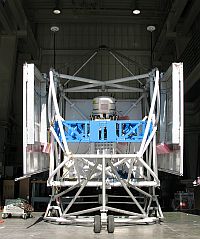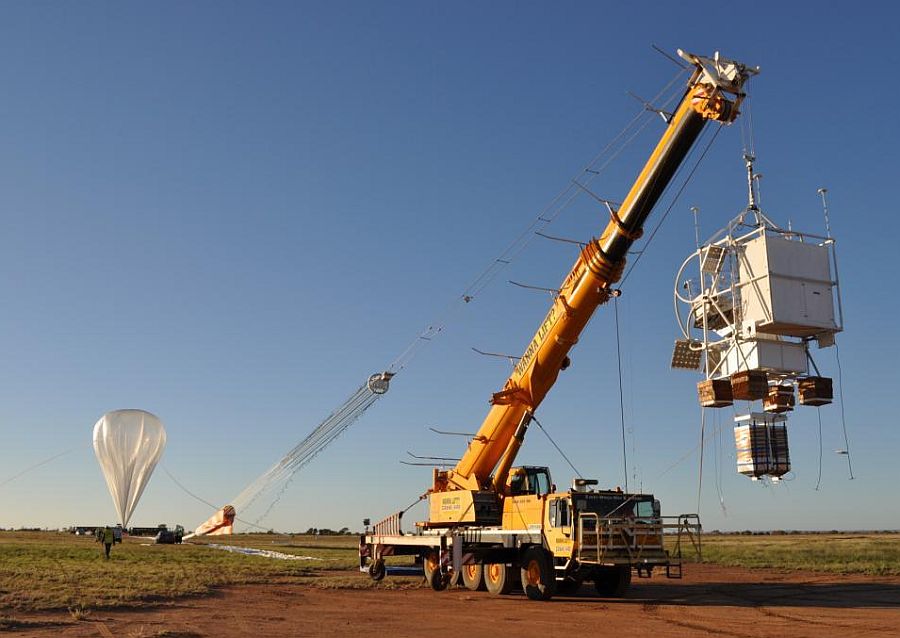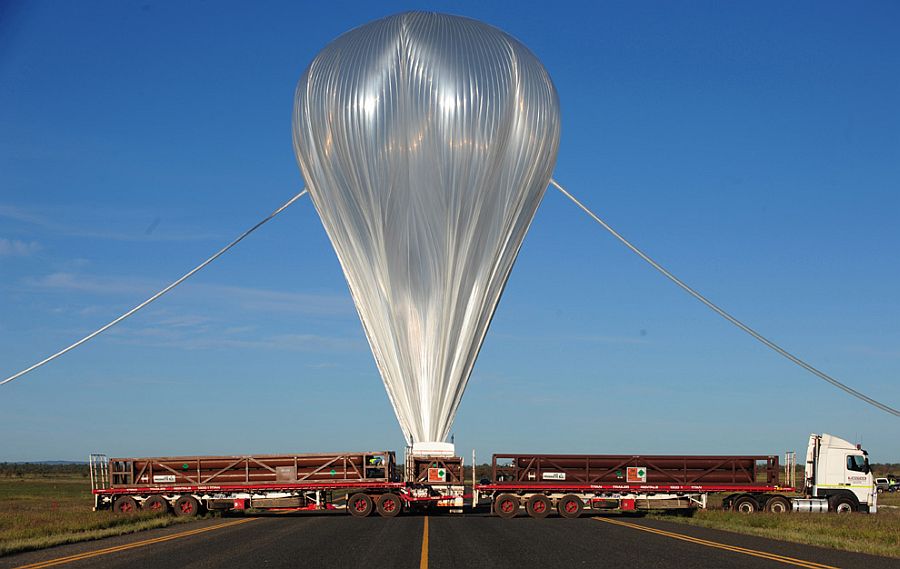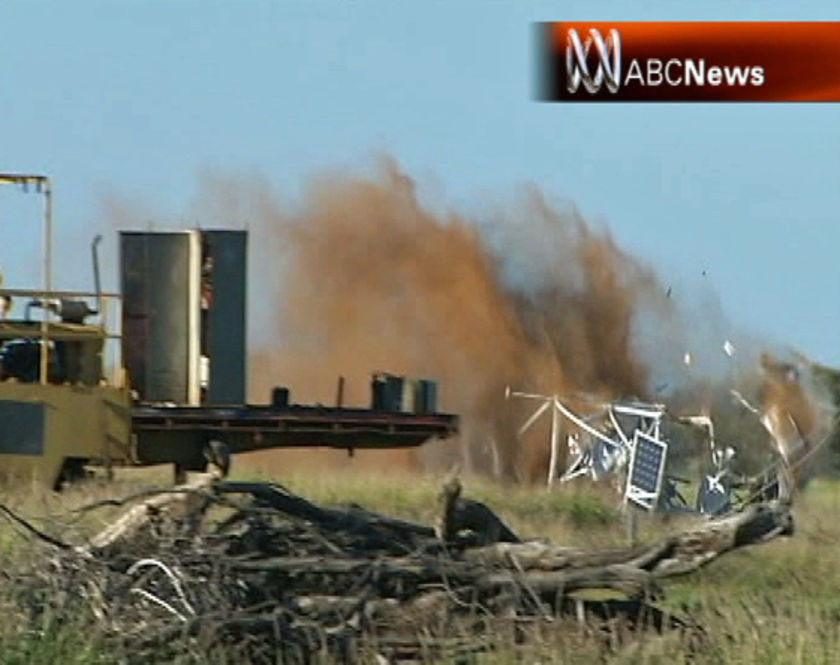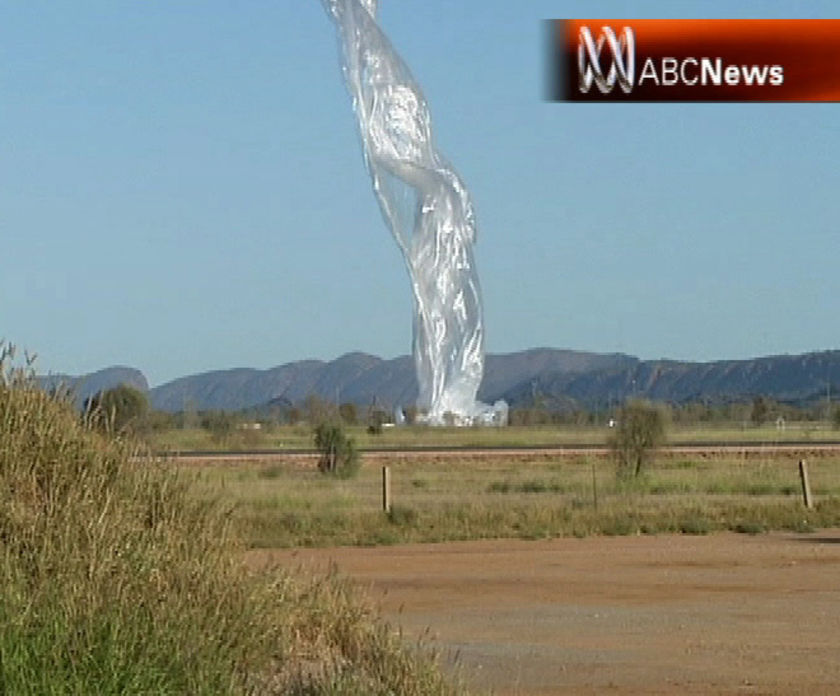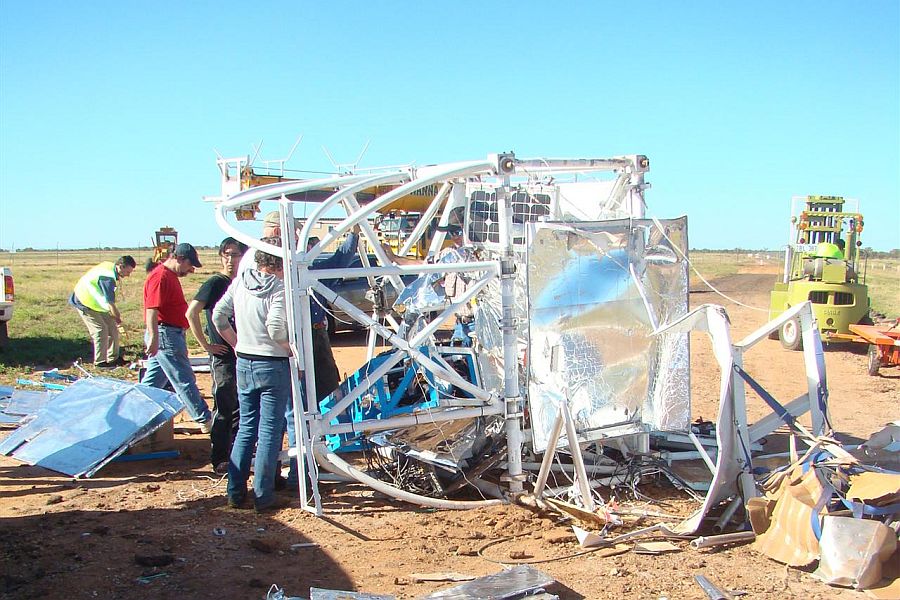Purpose of the flight and payload description
Is a balloon-borne soft gamma-ray (0.2-15 MeV) telescope designed to study astrophysical sources of nuclear line emission and gamma-ray polarization. It is part of the program to develop and test technologies and analysis techniques crucial for the Advanced Compton Telescope to be launched in 2015. At left we can see a image of the gondola depicting their main elements (click to enlarge).
It employs a novel Compton telescope design, utilizing twelve 3D imaging, high spectral resolution germanium detectors (GeDs), enclosed on the sides and bottom by an active bismuth germanate (BGO) well, and with an overall field-of-view (FOV) of 25% of the sky.
The Compton imaging serves three purposes: imaging the sky, measuring polarization, and very effectively reducing background.
NCT's guiding principle is that high efficiency and excellent background reduction are critical for advances in soft gamma-ray sensitivity. The combination of Compton imaging, active shielding, and analysis techniques made possible with the 3D GeDs serve to dramatically decrease the background.
The heart of NCT is an array of 12 crossed-strip cryogenic germanium detectors with 3-D position resolution, excellent spectroscopy, and high efficiency. As widely known, Compton telescopes image gamma-rays by inversion of the Compton scatter formula. An incoming photon at MeV energies will undergo a Compton scatter at an initial position in the instrument, losing an energy related to the scattered photon direction by the Compton scatter formula. Then, the scattered photon looses the rest of its energy in the instrument in a series of one or more interactions ending in a photoelectric absorption. By measuring the position and energy of the interactions with high precision, the photon event can be reconstructed through the Compton formula to determine the initial photon direction to within an annulus on the sky.
The instrument and associated electronics are mounted in a pointed, autonomous balloon platform capable of long duration balloon flights whose design is based on the HIREGS instrument gondola developed at UC Berkeley and flown four times in the past.
News about the crash
Details of the balloon flight
Balloon launched on: 4/28/2010 at 8:00 local time
Launch site: Australian Balloon Launching Station, Alice Springs, Australia
Balloon launched by: Columbia Scientific Balloon Facility (CSBF)
Balloon manufacturer/size/composition: Zero Pressure Balloon Raven - 39.570.000 cu ft - (0.8 Mil.)
Flight identification number: ABT#23
End of flight (L for landing time, W for last contact, otherwise termination time): 4/28/2010
Landing site: Ground abort. Payload destroyed at launch
The attempt to launch the NCT payload resulted in a very spectacular mishap. The following description of the launch operation was taken from the Executive Summary of the Final report published by NASA on regard the accident (the entire report is available on the internet, see references bellow).
"...The launch team reported to duty around 2 a.m. on April 29, 2010, Australian Central Time (ACT). Weather conditions were deemed favorable for a launch attempt, so the launch team assembled the balloon and payload hardware at the launch site. All pre-launch preparations were nominal and after the balloon bubble was inflated with helium, the Launch Director (LD) was given authority to launch by the Site Director (SD) who was communicating with Melbourne Air Traffic Control.
After the balloon bubble was released from the spool, it took flight and lifted the flight train. While initially maneuvering the launch vehicle for the launch attempt, the balloon slightly overtook the launch vehicle's position. The LD instructed the driver to make a left turn in order to make up ground on the balloon. Approximately 76 seconds after initiating motion of the launch vehicle, the LD slowed the vehicle for a launch attempt. During the launch attempt, in which the LD pulls on a release lanyard, the payload failed to release from the launch vehicle. Subsequently, the launch vehicle was accelerated in an attempt to catch up with the balloon for a second release effort. Upon reaching the airport fence the CSBF team recognized that the mission would have to be terminated and the LD attempted to maneuver the launch vehicle to a safe position after observing that spectators were in harm's way.
In the process of maneuvering the crane, the payload inadvertently broke free of the launch vehicle and was dragged by the wind-driven balloon through the airport fence and into an unoccupied vehicle that was owned by a public spectator. The spectator, who was photographing the launch attempt, was able to jump off the roof of his vehicle just prior to the collision. Other spectators were observed scrambling to avoid the payload. While no injuries occurred, the payload and the privately-owned vehicle suffered extensive damage and as stated, several spectators were nearly struck by the payload. Subsequently, videos produced by the Australian Broadcasting Company of the launch attempt were aired on numerous international news programs and were immediately available on the Internet..."
A Mishap Investigation Board (MIB) was appointed on May 12, 2010 to perform an investigation of the incident, but as an immediate consequence of the accident, not only the rest of the launch campaign in Australia was cancelled but a flight restriction was impossed over all NASA balloon activities, including domestic flights from Fort Sumner (NM), Palestine (TX) and a collaboration with the Swedish Space Corporation to launch an instrument called POGOLITE from Kiruna.
No data obtained due to the failure.
External references
- Nuclear Compton Telescope (NCT) home page at Space Sciences Laboratory, UC Berkeley
- Balloon Mishap in the Outback Case study report on the NCT balloon launch mishap published by NASA's Office of Safety and Mission Assurance
- Distpatches from the field NCT's Eric Bellm blog
- NASA Balloon Suffers Mishap in Australia official press release on the incident
- Nuclear Compton Telescope Balloon Launch in Alice Springs, Northern Territory, Australia. High Visibility Type B Mishap Report of the investigation of the accident published by NASA in October 2010
- Preliminary results from the Spring 2010 balloon campaign of the Nuclear Compton Telescope Proc. of SPIE Vol. 7805, 780514
- Video recording of the launch incident Australian Broadcasting Corporation
6275If you consider this website interesting or useful, you can help me to keep it up and running with a small donation to cover the operational costs. Just the equivalent of the price of a cup of coffee helps a lot.

